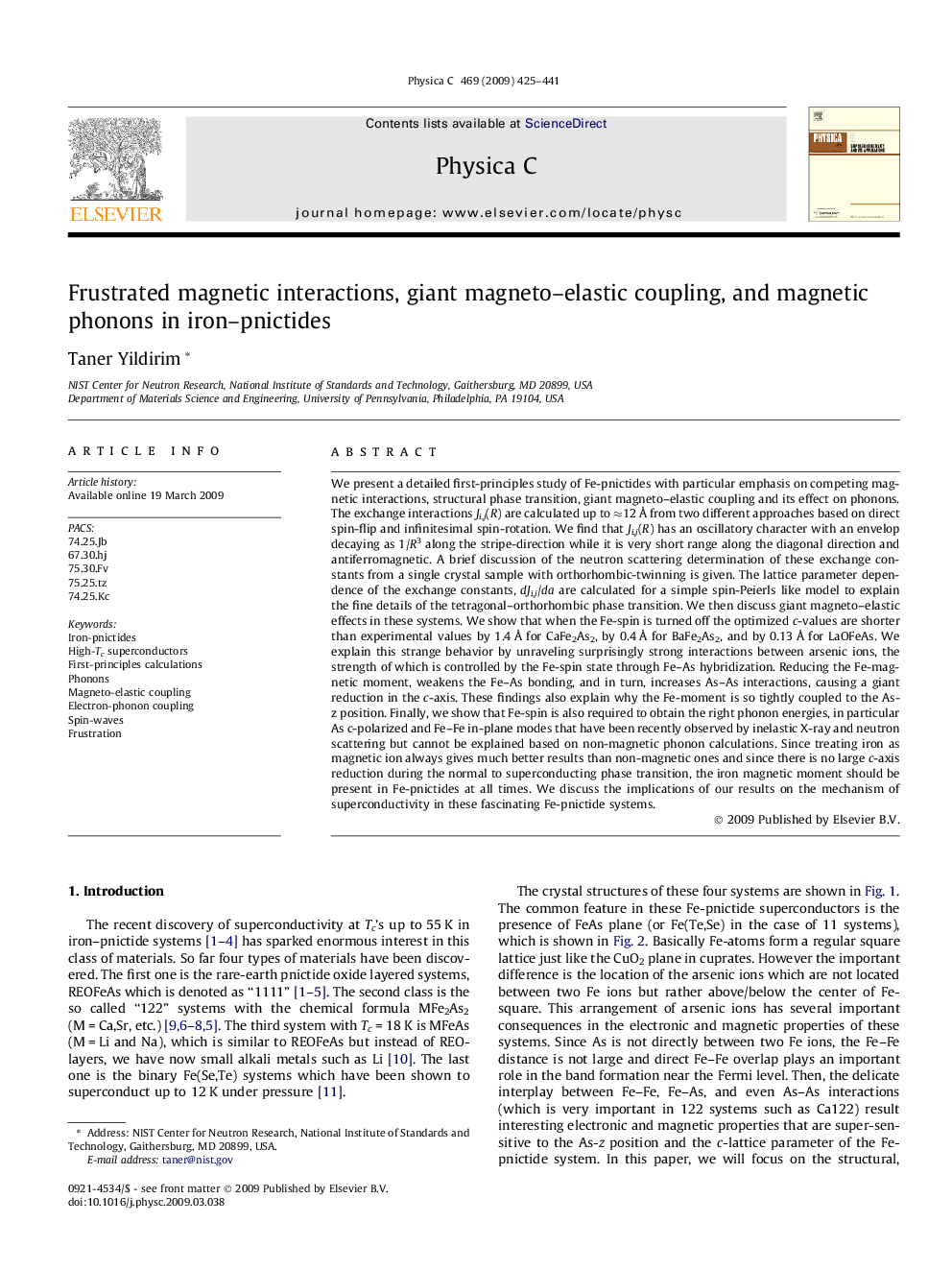| کد مقاله | کد نشریه | سال انتشار | مقاله انگلیسی | نسخه تمام متن |
|---|---|---|---|---|
| 1819107 | 1525762 | 2009 | 17 صفحه PDF | دانلود رایگان |

We present a detailed first-principles study of Fe-pnictides with particular emphasis on competing magnetic interactions, structural phase transition, giant magneto–elastic coupling and its effect on phonons. The exchange interactions Ji,j(R) are calculated up to ≈12 Å from two different approaches based on direct spin-flip and infinitesimal spin-rotation. We find that Ji,j(R) has an oscillatory character with an envelop decaying as 1/R3 along the stripe-direction while it is very short range along the diagonal direction and antiferromagnetic. A brief discussion of the neutron scattering determination of these exchange constants from a single crystal sample with orthorhombic-twinning is given. The lattice parameter dependence of the exchange constants, dJi,j/da are calculated for a simple spin-Peierls like model to explain the fine details of the tetragonal–orthorhombic phase transition. We then discuss giant magneto–elastic effects in these systems. We show that when the Fe-spin is turned off the optimized c-values are shorter than experimental values by 1.4 Å for CaFe2As2, by 0.4 Å for BaFe2As2, and by 0.13 Å for LaOFeAs. We explain this strange behavior by unraveling surprisingly strong interactions between arsenic ions, the strength of which is controlled by the Fe-spin state through Fe–As hybridization. Reducing the Fe-magnetic moment, weakens the Fe–As bonding, and in turn, increases As–As interactions, causing a giant reduction in the c-axis. These findings also explain why the Fe-moment is so tightly coupled to the As-z position. Finally, we show that Fe-spin is also required to obtain the right phonon energies, in particular As c-polarized and Fe–Fe in-plane modes that have been recently observed by inelastic X-ray and neutron scattering but cannot be explained based on non-magnetic phonon calculations. Since treating iron as magnetic ion always gives much better results than non-magnetic ones and since there is no large c-axis reduction during the normal to superconducting phase transition, the iron magnetic moment should be present in Fe-pnictides at all times. We discuss the implications of our results on the mechanism of superconductivity in these fascinating Fe-pnictide systems.
Journal: Physica C: Superconductivity - Volume 469, Issues 9–12, 1 May–15 June 2009, Pages 425–441